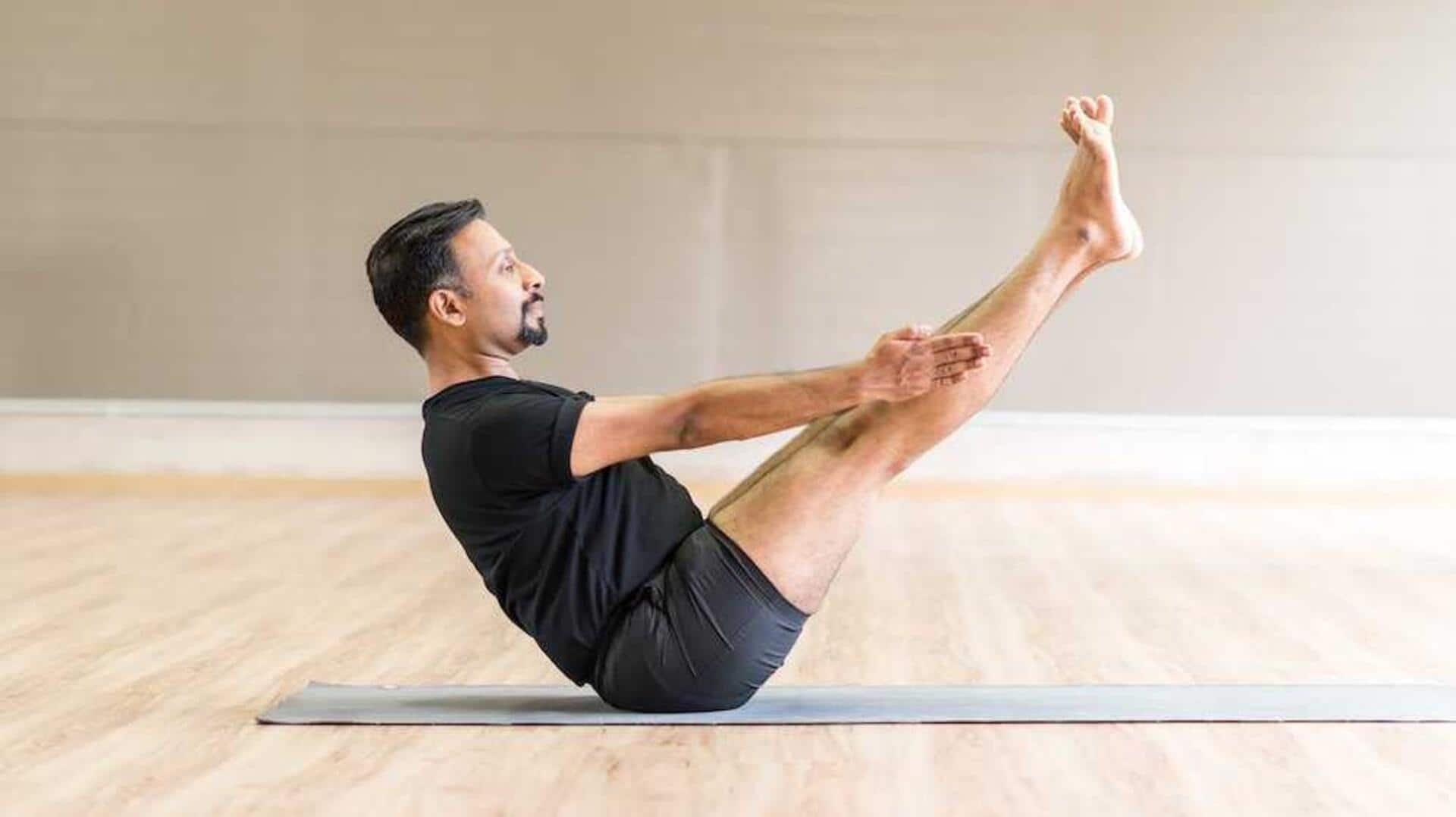
Your guide to mastering boat pose yoga
What's the story
Boat pose, or navasana, strengthens the core, engages the abdominal muscles, improves balance, and enhances concentration. Practicing it regularly promotes a better posture and flexibility. Correctly performing and incorporating the boat pose into your routine maximizes its benefits. Here are insights to unlock this yoga position's full potential.
#1
Mastering the technique
To reap the full benefits of boat pose, you need to get the technique right. Sit on the floor with your legs stretched before you. Gradually lean back while raising your legs off the ground until your body forms a V shape. Maintain a straight spine and tighten your core muscles to maintain stability. Hold the position for a few breaths before releasing slowly. Practicing regularly will improve your form and strength with time.
#2
Engaging core muscles effectively
Engaging core muscles effectively is key to maximizing benefits from boat pose. Focus on tightening your abdominal muscles as you lift into position, ensuring they remain active throughout the hold. This engagement not only strengthens these muscles but also supports proper alignment and balance in the posture. Regular practice will enhance muscle tone and endurance.
#3
Enhancing balance & concentration
Since boat pose requires balance and concentration, it's a great exercise for not just physical strength but also mental focus. As you keep stable in this challenging pose, focus on steady breathing patterns to calm your mind while balancing out with precision. With regular practice of boat pose, you can enhance both mental clarity as well as physical coordination.
Tip 4
Incorporating variations for flexibility
Incorporating variations of boat pose can increase flexibility while keeping practice engaging. Try bending knees slightly or extending arms overhead for added challenge once comfortable with basic form. These modifications target different muscle groups without compromising core engagement or alignment principles inherent within traditional execution methods used during regular sessions involving standard postures like navasana itself!